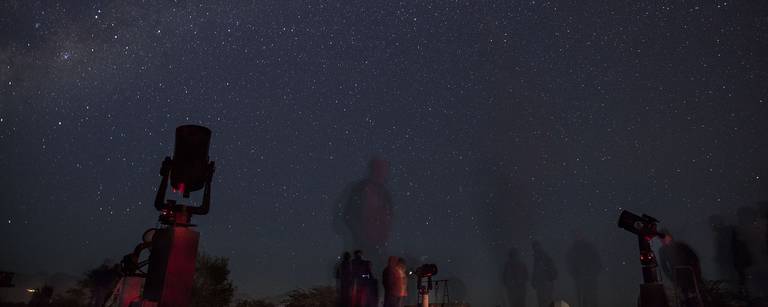Observing the Sun With a Telescope
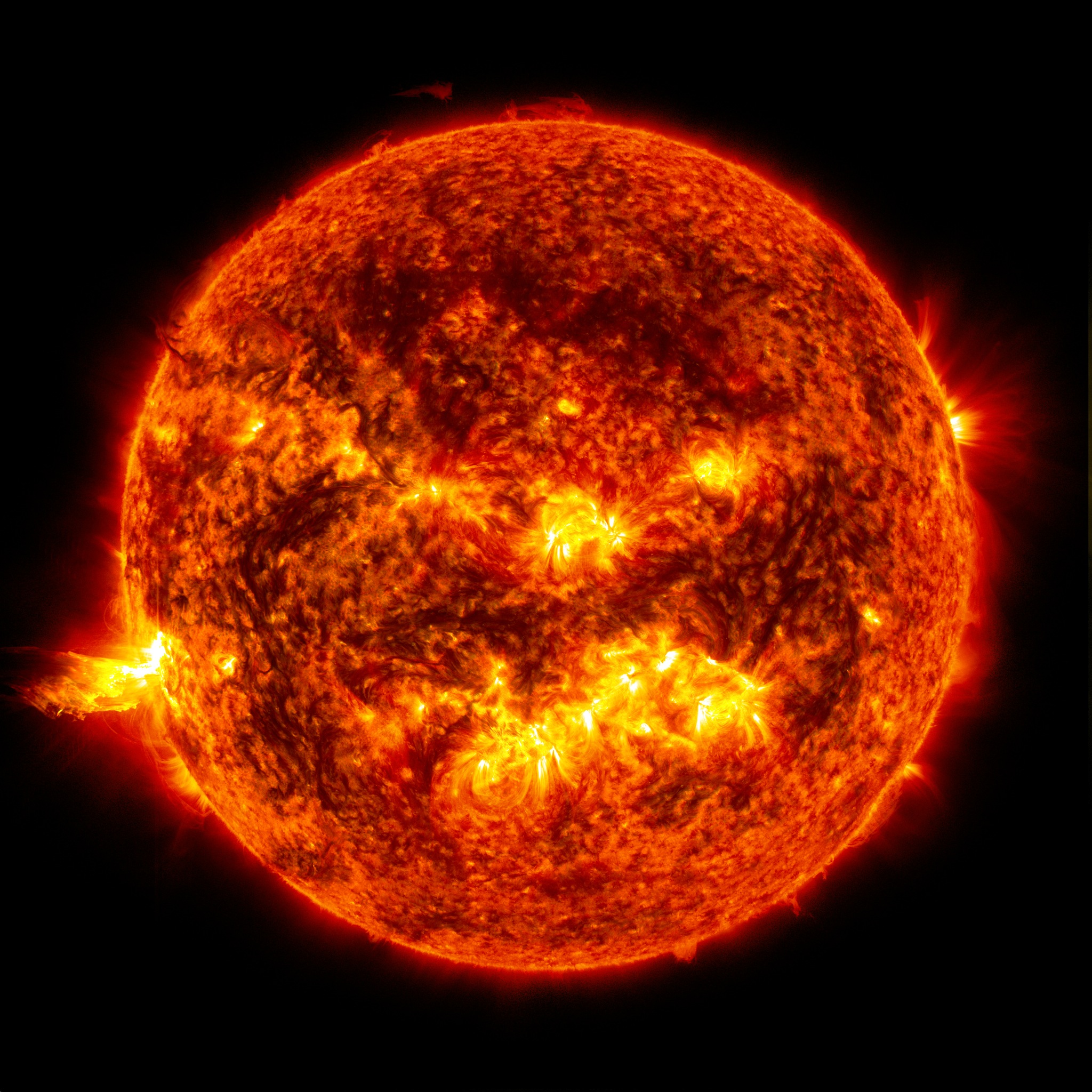
Amateur astronomy is mainly a nighttime hobby since you can’t see the stars during the day. But there is one star you can see: the Sun! Solar observation is actually quite fascinating, but you need to be extremely careful whenever you’re trying to look at the sun: never, never point any optical instrument directly towards the Sun without equipment specially made for that purpose! Doing so will cause severe burns to your eyes and permanent blindness.
There are a number of ways to observe the Sun safely, depending on your budget and what you want to see. The easiest way is to observe the Sun is in white light. This is where you can see the spots on its surface, for instance. Alternatively, you can use so-called narrowband filters that let only a tiny part of the of the Sun’s light go through: the H-alpha band. The resulting image is reddish and contains many amazing features that can’t be seen in the broader spectrum of white light. Unfortunately, H-alpha filters are the most expensive, and they can’t be used with all scopes. Actually, among the different methods explained below, only a filter mounted at the entrance of the telescope’s tube will allow you to use a reflecting telescope. All other methods are restricted to reflectors.
A note of caution: regardless of the method you use, if you have a finder scope attached to your tube, you may want to cap it, or better yet, remove it. This will prevent anyone from accidentally looking into it. Be careful. After all, it’s a magnifying optical instrument pointed at the Sun that’s not protected by a filter!
Solar projection
Solar projection is probably the easiest way to observe the Sun with a telescope. It involves attaching a white surface in front of the eyepiece and projecting the Sun onto it. This way, you can observe safely, without the need for a filter, and you can even have a group of people enjoying the observation together. That said, this technique is not unanimously approved because, if you’re not extremely careful, you can very easily damage your telescope! Because you’ll be pointing the instrument towards the Sun, its already extremely bright light will be amplified by the lens. Anything that ends up in the path of the light inside the tube will burn or melt.
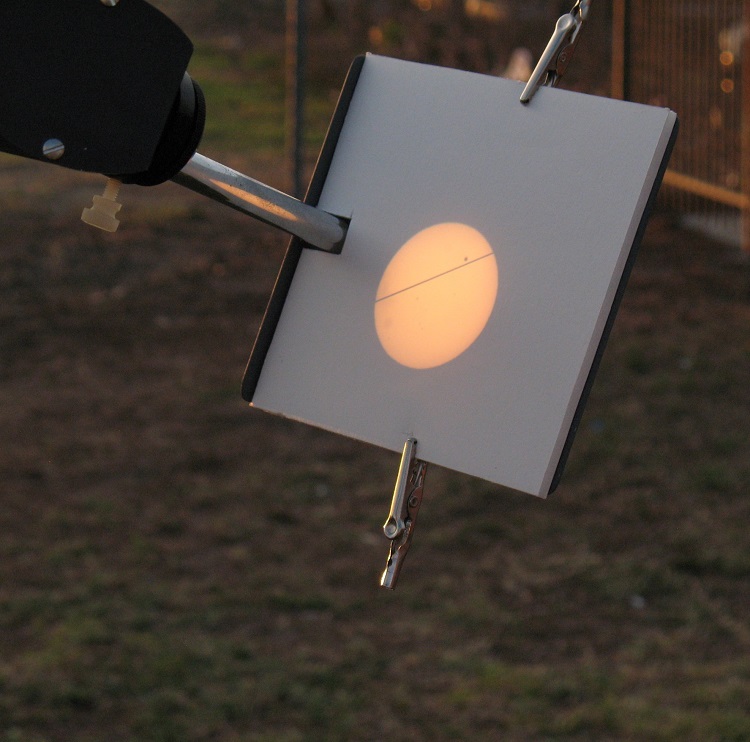
As with the Herschel wedges we’ll examine below, never attempt solar projection with a reflecting telescope. If you have a Schmidt-Cassegrain, a Newtonian or a Maksutov, for instance, forget solar projection. These telescopes have a secondary mirror and the heat generated can damage it. Also, they generally have a larger aperture than refractors, which means they collect and focus more light. Even with a refractor, go for a small aperture; 70 mm, for instance, is more than enough. Another thing you need to worry about is the eyepiece. Since it’s located at the end of the tube where all the light from the Sun will be focused, it will be exposed to extreme temperatures. If you use an eyepiece constructed from multiple lenses that are cemented together, the heat can damage the cement. Finally, when the Sun moves inside the field of view, some non-optical parts of the telescope may end up in the path of the light. Anything nonmetallic will melt. I’ve seen this happening on an eyepiece that was used for solar projection, and the result is not pretty.
In summary, for safe solar projection
—never use reflecting telescopes, only refractors
—use the simplest and cheapest eyepieces you can find
—use a scope with a small aperture and long focal length; it will collect less light and the light it does collect will be spread over a greater distance, thus producing less heat
—if possible, use a mount that tracks the Sun, preventing it from sliding inside the field of view of the eyepiece. If this happens, the light path will shift inside the tube and hit something heat-sensitive.
Solar lens filters
Lens filters are mounted on the front of the telescope and they will let only a tiny fraction of the Sun’s white light enter the instrument; no more than 0.001%, actually. This way, there’s no risk of frying anything inside the tube. These filters can be made of foil or glass. Foil filters are affordable; glass ones are slightly more expensive,but they’re also more durable.
Filters can be used with any type of telescope, even ones with larger apertures, and with any type of eyepiece. Lens filters are the only affordable way to observe the Sun with a reflecting telescope.
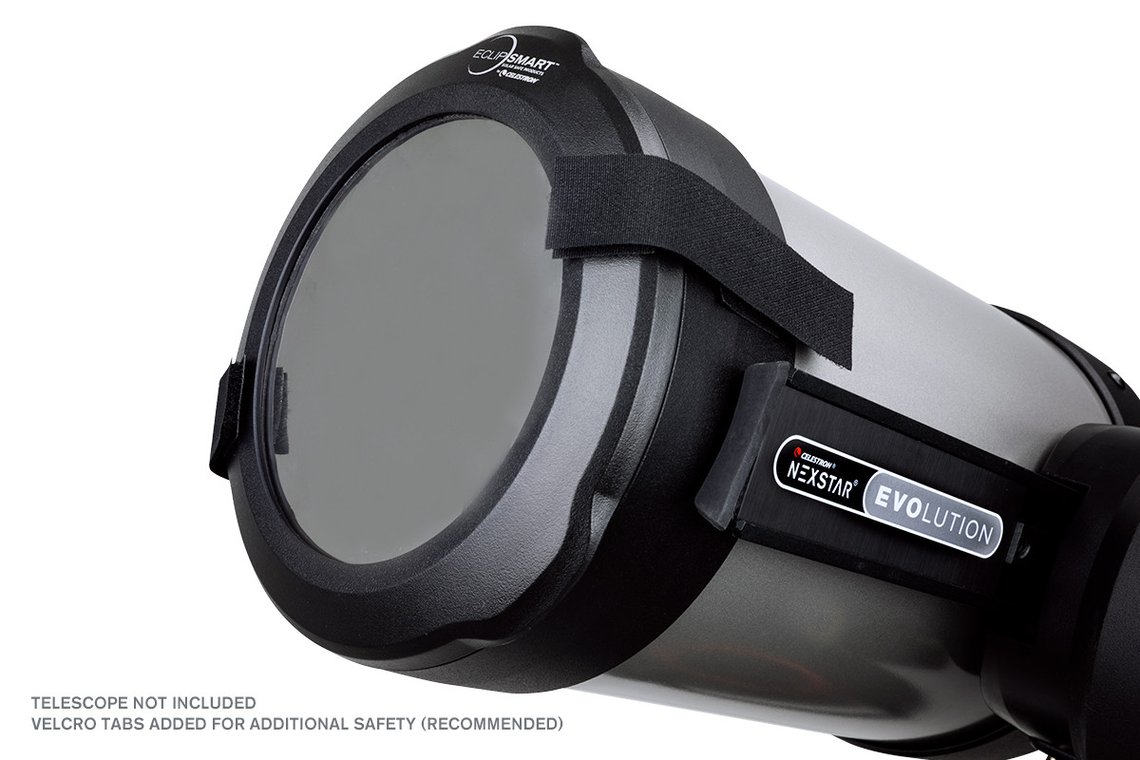
The only thing that makes people a bit nervous about using lens filters, me included, may be that you don’t really have a way to lock them in place. It’s not that they’ll fall off the telescope by themselves or anything, but they can be removed very easily. If you’re observing alone, there’s no need to worry. But If you have people around, especially kids, this should definitely be a concern. Personally, I wouldn’t use a lens filter for solar observation at any outreach event unless safety measures were in place, such as barriers around the telescope that allow only one observer at a time near the viewing instrument in addition to the operator.
Solar wedges
Solar wedges, also called Herschel wedges after the astronomer John Herschel, are a special type of star diagonal that you can attach to the eyepiece side of a telescope. While regular star diagonals have an angled mirror whose job it is to send nearly 100% of the light at a 90° angle to make it easier for you to observe through a telescope, solar wedges have a prism that reduces the quantity of white light that is sent to the eyepiece.
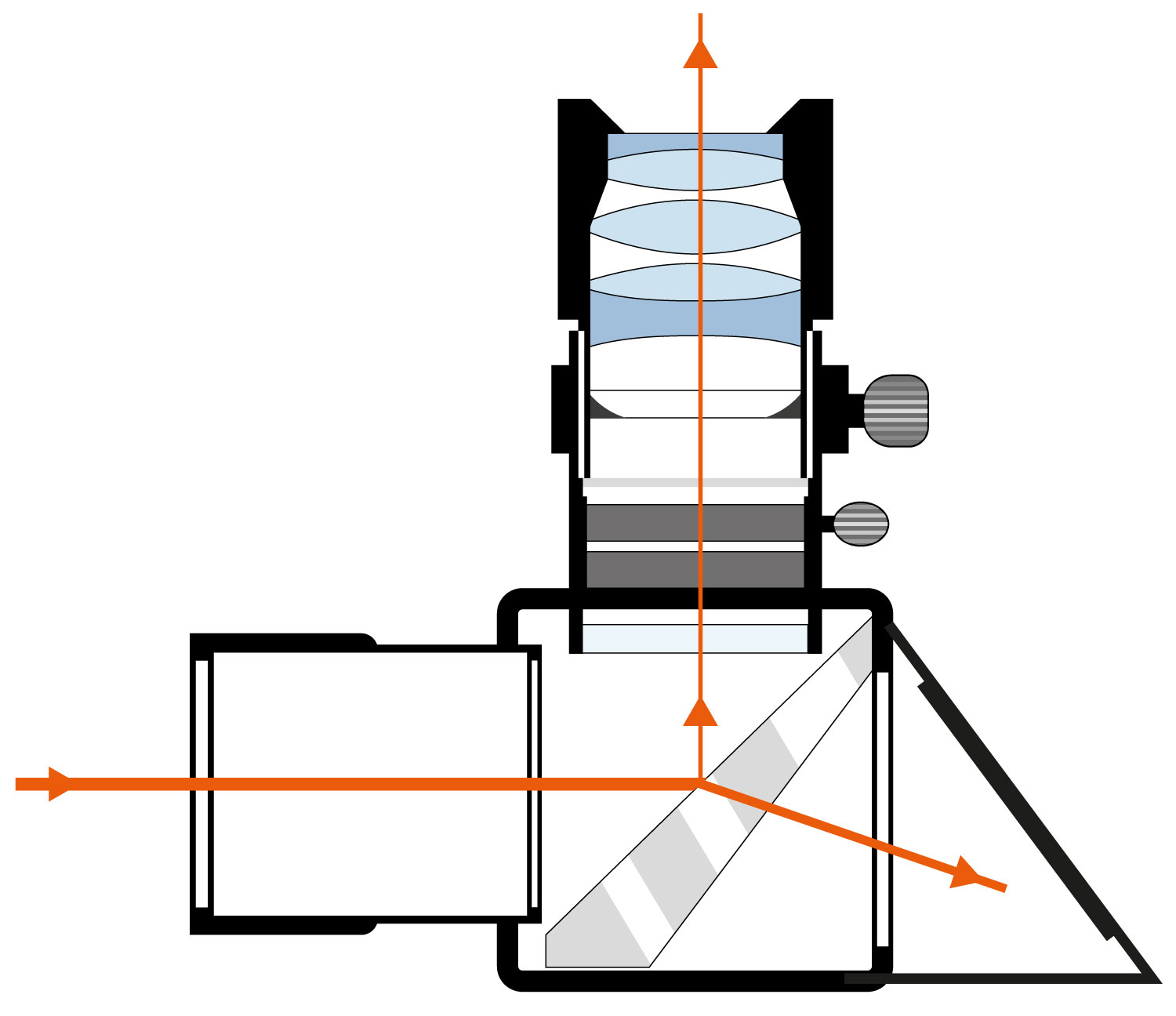
The prism redirects most of the incoming light towards a piece of heat-absorbing material, letting less than 5% of the white light through. This is still too much to look at directly, and you’ll need to add a specially designed filter in front of the eyepiece.
Solar wedges cannot be used with reflectors because the heat can damage the secondary mirror. Even if they’re used with refractors, the aperture of the telescope should be relatively small. You don’t want to collect too much light when you use a solar wedge because it could overheat. Always check the manual or ask the manufacturer about the maximum aperture.
Finally, avoid solar wedges with any refractor that has plastic parts near the light path. When the sunlight enters the telescope tube through the lens, it’s focused into a tiny point. The temperature at this point is extremely high, and this will cause any nearby plastic to melt.
H-alpha filters
H-alpha filters are designed to allow only the light emitted by the Sun’s chromosphere to pass through them. They are made of two distinct elements:
—the front filter that comes with a mount that allows you to fasten the filter in front of the lens.
—the diagonal, located at the other end, which goes in front of the eyepiece and adds another layer of filtering.
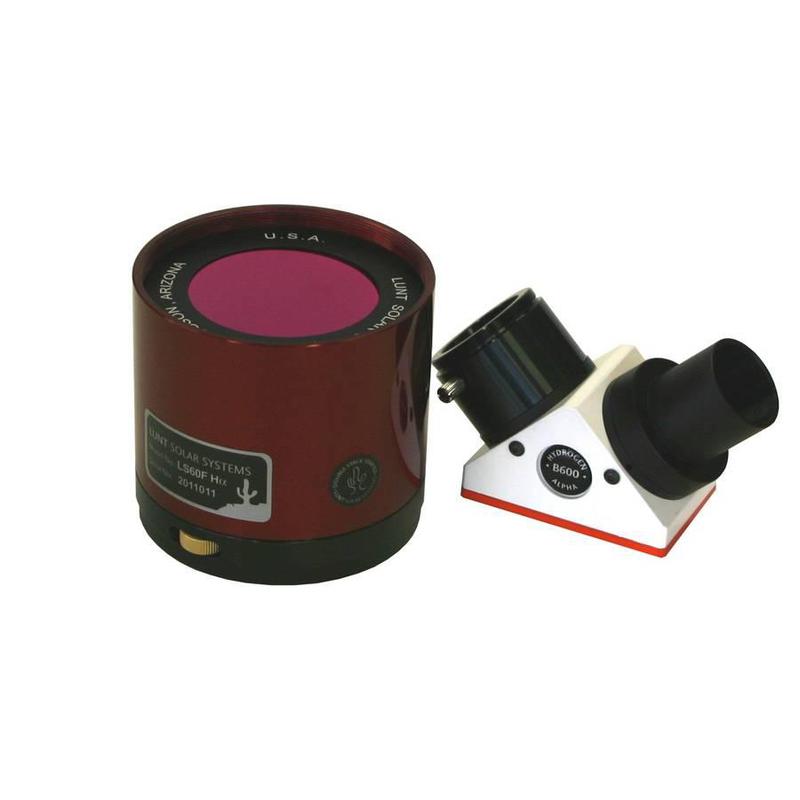
(c) www.astroshop.eu
Both parts work in concert and must be used together.
While in theory there is nothing to prevent you from using H-alpha filters with reflecting telescopes – those with larger apertures, such as Schmidt-Cassegrain, Newtonian, or Maksutov – in practice, this would mean a larger front filter, which would be very expensive.
Solar telescopes
Solar telescopes are refractors specially designed for observing the Sun in the H-alpha wavelength. They include the H-alpha lens filter and the blocking filter, and they’re
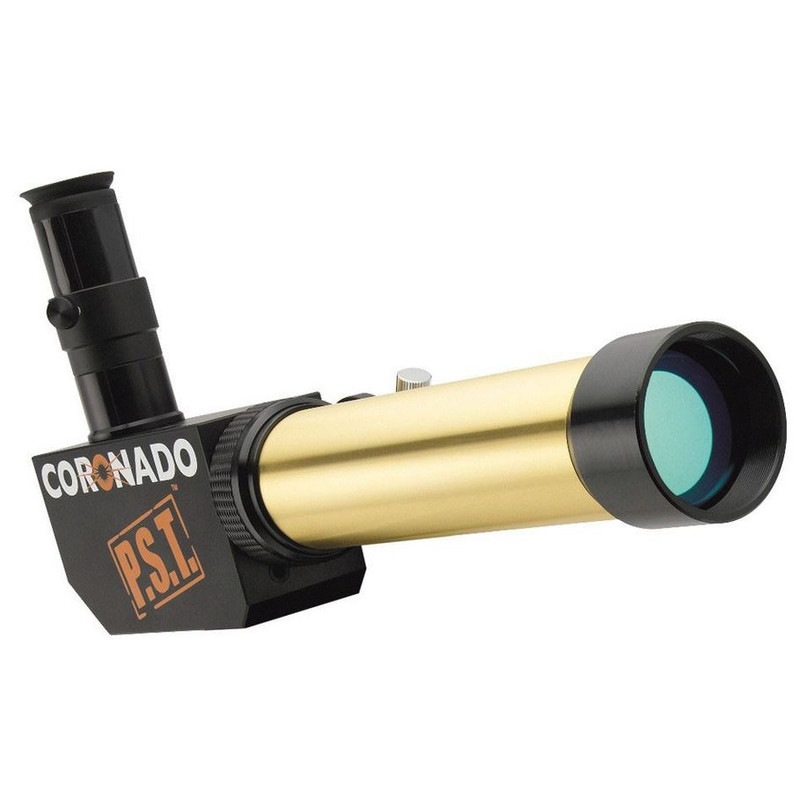
(c) www.astroshop.eu
dedicated to solar observing; they can’t be used for night observing. Solar telescopes represent the most expensive option, but they generally produce better images.







